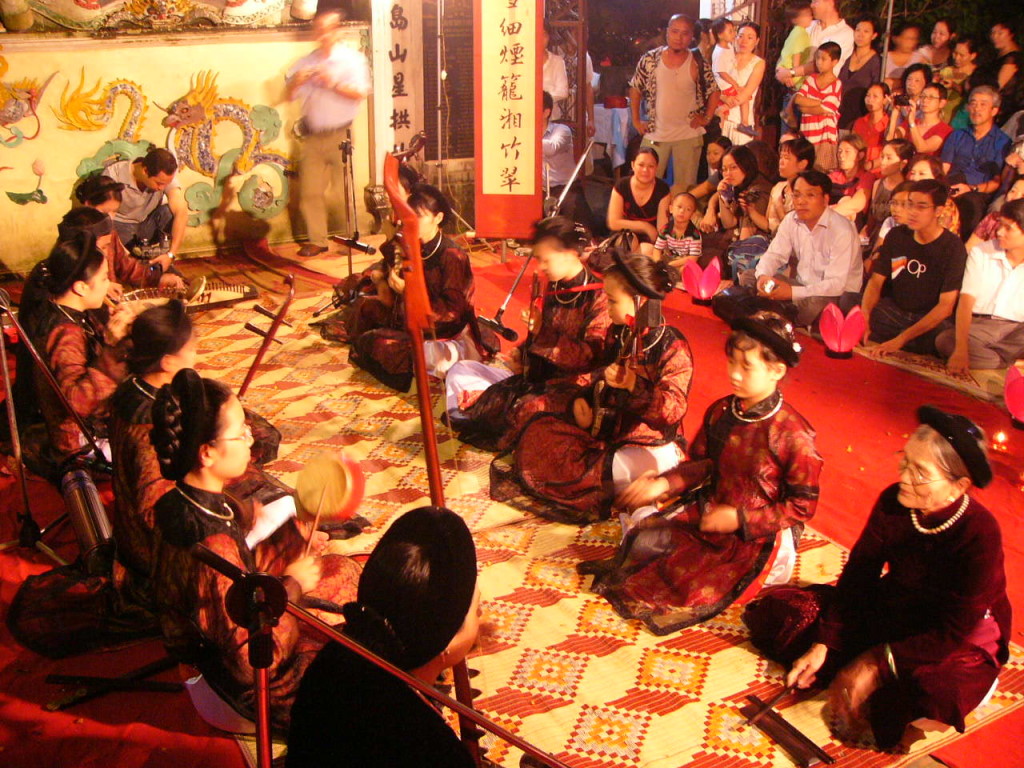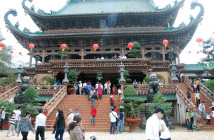Ca tru (hat a dao, hat nha tro, hat co dau). A traditional musical genre initially performed in court festivals and rituals during the Ly dynasty, also called hat khuon.
These songs were used for entertainment at weddings and banquets (hat hang hoa). The style uses embellished language and two simple musical instruments- castanets and the three stringed lutes. The castanets (phach) consist of three pieces of seasoned bamboo: two flat strips used to strike a round piece. The three-stringed lute (dan vay) produces sounds of unique depth. The singer, usually a carefully trained mature aged woman, plays the castanets in time with the song. Her accompanist (kep) plays the lute. A literate and musical participant follows the song, striking a small gong to punctuate particular phrases or ideas, or to praise the singer or musician. One of the most original forms of ca tru is spoken song (hat noi).
Ca tru has changed over time, which is why it has been known by different names: hat nha tro (songs with dancing), hat the (songs commissioned by the royal court), hat cua quyen (songs performed for nobility), hat cua dinh (songs performed for religious services in the communal house), and hat nha to (songs for the mandarins). Ca tru later also evolved into common entertainment and lost its quality as aesthetic pleasure and was sung by young women selling drinks (dao ruou).







